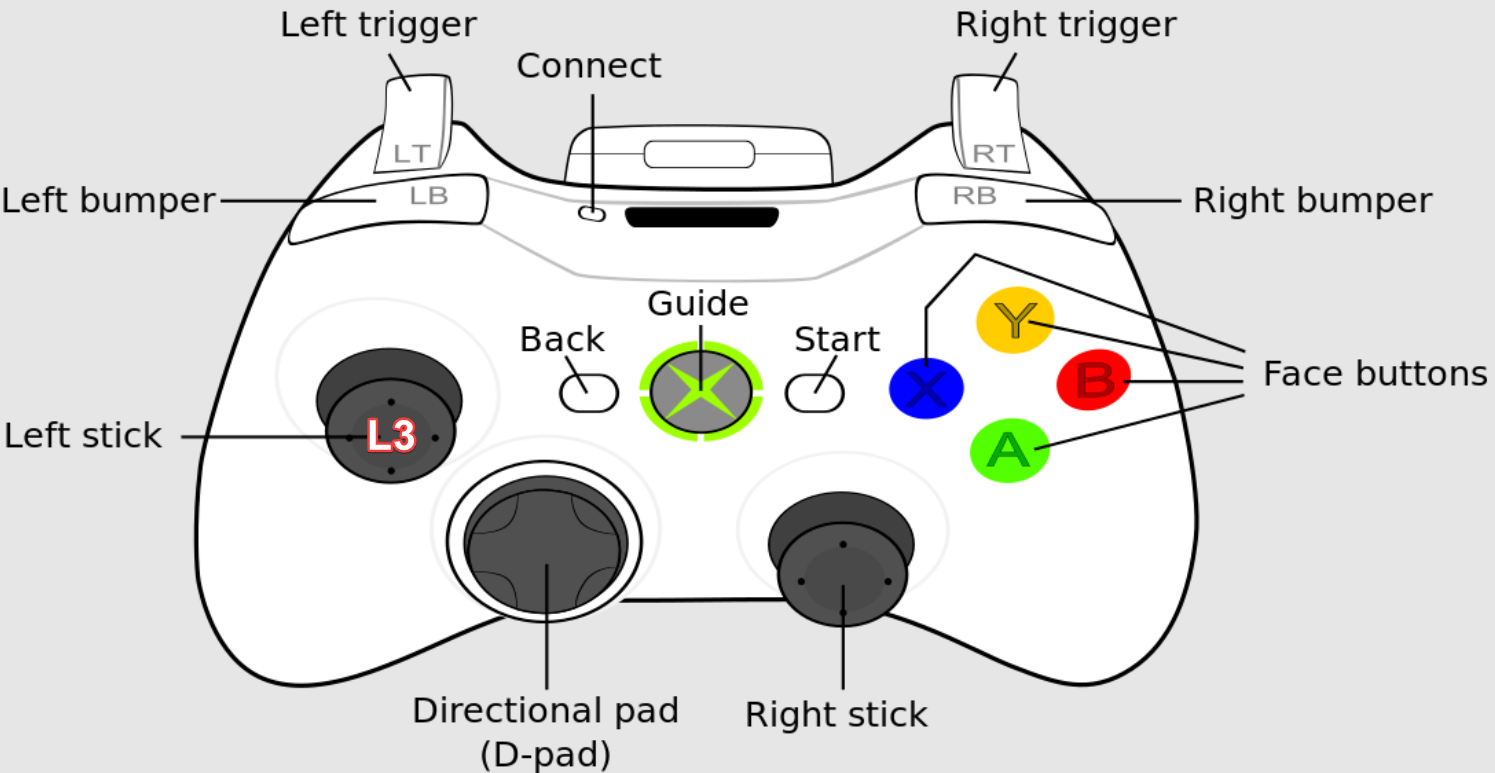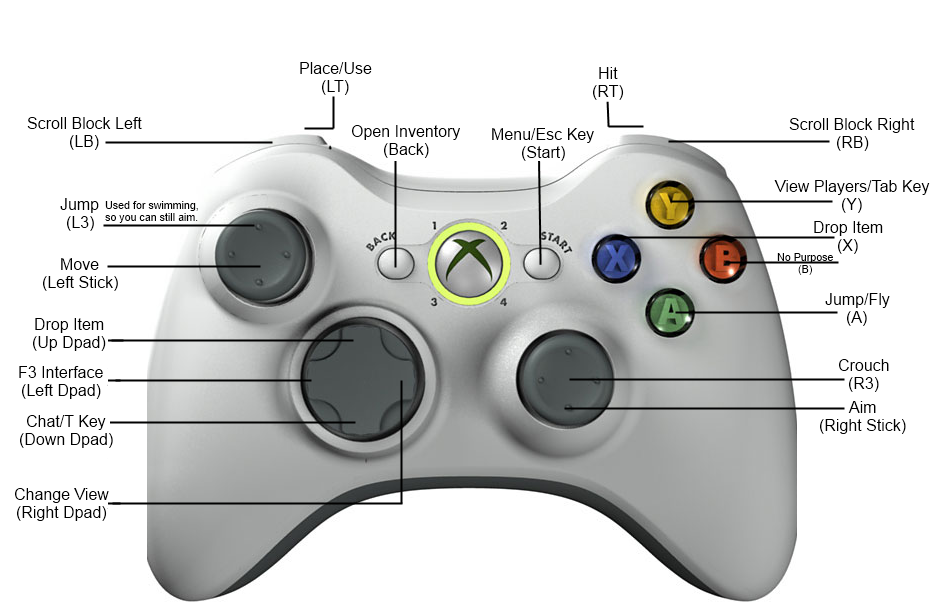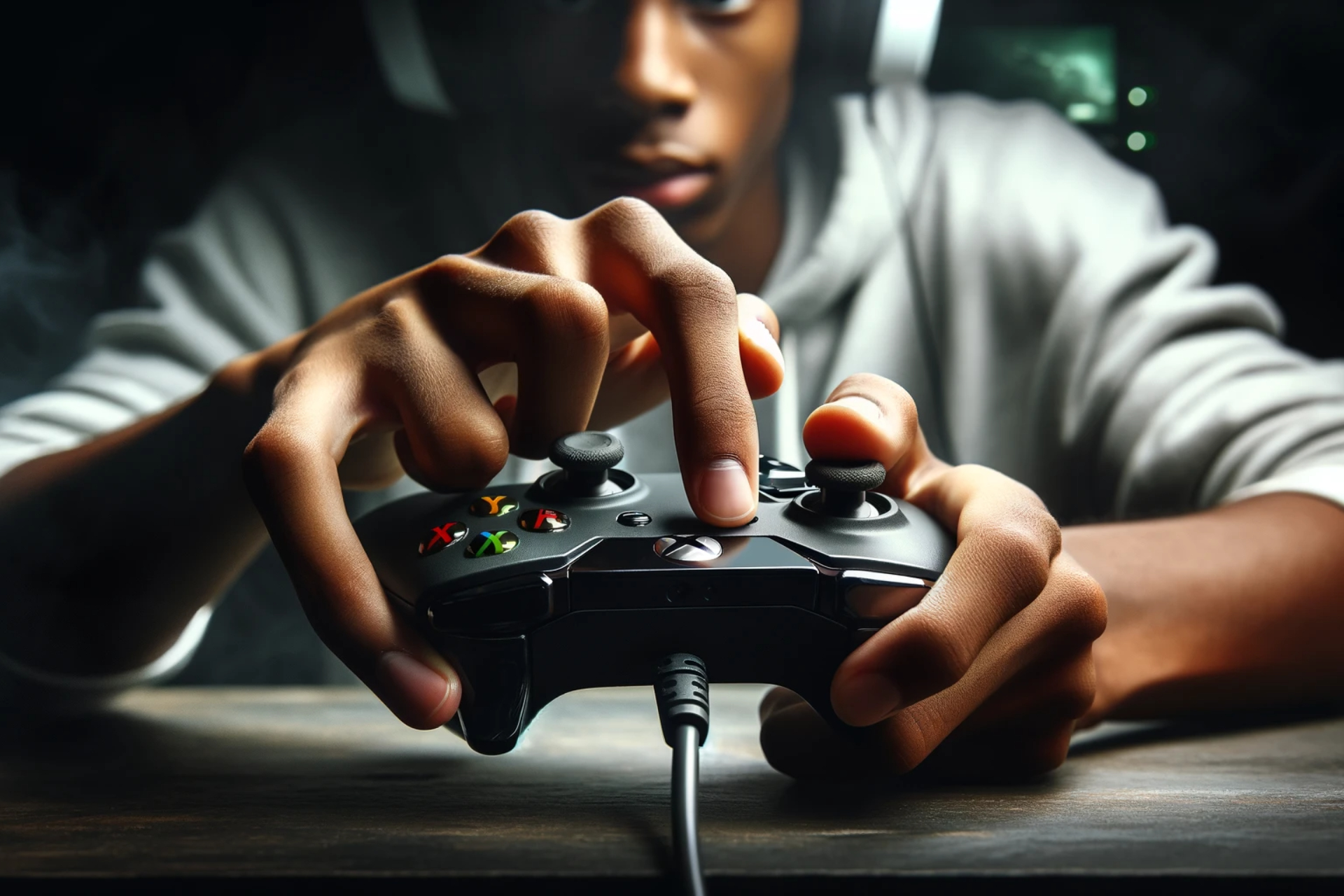Xbox L3/R3 Buttons: Master Your Controller! [Guide]
Ever found yourself fumbling with your Xbox controller, unsure exactly which button does what? Understanding the L3 button on your Xbox controller can drastically improve your gaming experience, unlocking hidden features and giving you a competitive edge.
The world of gaming controllers can feel like navigating a complex cockpit, especially when acronyms like "L3" and "R3" are thrown into the mix. While the standard A, B, X, and Y buttons are universally understood, these lesser-known inputs often hold the key to advanced gameplay mechanics. For Xbox users, deciphering the function and location of the L3 button is crucial for mastering their favorite games. This exploration will delve into the intricacies of the Xbox L3 button, clarifying its purpose, location, and potential troubleshooting steps.
| Category | Information |
|---|---|
| Button Name | L3 Button (Left Stick Button) |
| Function | Varies depending on the game; often used for sprinting, crouching, or melee attacks. Can also be mapped to other functions in some games. |
| Location on Controller | Located on the left analog stick. Pressing down on the stick activates the L3 button. |
| Common Uses |
|
| Troubleshooting |
|
| Reference | Xbox Official Website |
To begin, lets pinpoint where to find this elusive L3 button. The Xbox L3 button isn't a standalone button like the 'A' or 'B'; instead, it's integrated into the left analog stick. More specifically, the L3 button is activated when you press down on the left analog stick until you hear a click. Think of it as a hidden button within the joystick itself. This design choice maintains a sleek controller layout while still providing additional input options for gamers.
- The Untold Story Of Band Of Brothers Captain Sobel Fact Vs Fiction
- Mr Miyagis Untold Story The Life Legacy Of Pat Morita
While the L3 buttons location remains consistent across most Xbox controllers (including the Xbox One, Xbox One S, and Xbox Series X/S), its function can vary significantly depending on the game being played. This versatility is what makes the L3 button such a valuable asset in a gamer's arsenal. In many first-person shooter (FPS) games, for example, pressing L3 is the default command for sprinting, allowing for faster movement and quicker escapes. In other games, it might be used for crouching, performing melee attacks, or activating special abilities. Some games even allow players to customize the L3 buttons function, assigning it to a specific action that suits their individual playstyle.
Beyond its in-game applications, the L3 button can also be used for navigating menus and accessing options. In some games, pressing L3 while in a menu might bring up a contextual help screen or provide additional information about a selected item. It's worth experimenting with the L3 button in different menus to see what hidden functionalities it might unlock.
Given its crucial role in many games, a malfunctioning L3 button can be incredibly frustrating. If you find that your L3 button isn't responding properly, there are several troubleshooting steps you can take. First, ensure that your controller is properly connected to your Xbox console and that the batteries are sufficiently charged. A weak battery or a faulty connection can sometimes interfere with button functionality. Next, check the game settings to ensure that the L3 button is mapped to the correct action. It's possible that the button assignment has been accidentally changed, rendering it ineffective.
- Frank Gallaghers Death Exploring The Shameless Finale Legacy
- Adriana Limas Kids A Glimpse Into Her Family Life Updated
If the connection and button mapping are correct, the next step is to update your controller's firmware. Microsoft regularly releases firmware updates for Xbox controllers to improve performance and fix bugs. To update your controller, you'll need to download the Xbox Accessories app from the Microsoft Store. Once installed, connect your controller to your Xbox console using a USB cable or the Xbox Wireless Adapter for Windows. The app will automatically detect any available updates and guide you through the installation process.
Another potential cause of L3 button issues is physical obstruction. Over time, dirt, dust, and debris can accumulate around the analog stick, interfering with its movement and button functionality. To clean your controller, use a soft, dry cloth to wipe away any visible dirt or grime. For more stubborn debris, you can use a cotton swab lightly dampened with isopropyl alcohol. Be careful not to get any liquid inside the controller, as this could cause damage.
In some cases, the L3 button may simply be worn out or damaged. Like any mechanical component, the analog stick and its associated button can degrade over time with frequent use. If you've tried all of the troubleshooting steps above and the L3 button is still not working properly, it may be necessary to replace your controller. Alternatively, you could consider taking your controller to a professional repair shop to see if they can fix the L3 button.
It's also important to note that the L3 button on an Xbox controller serves a similar purpose to the R3 button on a PlayStation controller. Both buttons are activated by pressing down on the respective analog sticks, and they are often used for similar actions in games. If you're a multi-platform gamer who frequently switches between Xbox and PlayStation, it's helpful to be aware of this equivalence. This is especially true when navigating tutorials or online guides that may refer to one button or the other.
Diving deeper into the Xbox controller's button layout, it's easy to confuse the L3 button with other similarly named inputs. The 'L1' button, for instance, is the left bumper located on the top-left side of the controller's shoulder. The 'L2' button, on the other hand, is the left trigger (LT) located at the back-left of the controller. While these buttons are also important for gameplay, they serve different functions than the L3 button. Similarly, the 'RS' or right stick button on an Xbox controller mirrors the functionality of the L3 button but controls actions related to the right analog stick. The front of the Xbox controller also features 'LS' and 'RS' buttons, which can pack many functions, depending on the specific game or app.
Understanding these distinctions is key to effectively utilizing your Xbox controller's full potential. Each button has its own unique purpose, and mastering them all can significantly enhance your gaming skills. In the realm of PlayStation controllers, one might encounter custom controller profiles designed to optimize setups for different users or games, hinting at the level of personalization and control that dedicated gamers seek. Although this specific feature might not directly translate to Xbox, the underlying principle of tailoring the controller experience to suit individual preferences remains relevant.
Beyond the standard Xbox controllers, some third-party manufacturers offer alternative controller designs that may feature different button layouts or additional inputs. These controllers are often geared towards professional gamers or players with specific needs. For example, some controllers may have remappable buttons, allowing you to assign any function to any button on the controller. Others may have adjustable analog sticks, allowing you to fine-tune the sensitivity and responsiveness of the sticks. When considering a third-party controller, it's important to research its features and compatibility to ensure that it meets your specific requirements.
The Xbox Series X/S controller, while retaining the L3 button in its familiar location, features a more refined design with added share and mute buttons. These additions reflect the evolving landscape of gaming, where sharing gameplay and communicating with teammates have become increasingly important. The share button allows you to quickly capture screenshots or record gameplay videos, while the mute button allows you to silence your microphone during online matches. While these new features don't directly affect the functionality of the L3 button, they contribute to a more seamless and user-friendly gaming experience.
For players who utilize Xbox Remote Play, understanding how controller buttons translate to on-screen inputs is crucial. When remote play starts, your controller's buttons are displayed on the screen, allowing you to easily identify their corresponding functions. In some cases, double-tapping the touch pad or the stick on the screen may operate as a touch pad button or the L3 and R3 buttons, respectively. This feature provides an alternative input method for players who prefer to use the touch screen.
To further clarify the L3 button's functionality, let's consider some specific examples of how it's used in popular Xbox games. In the "Call of Duty" series, pressing L3 is typically used for tactical sprinting, allowing players to move quickly while aiming down sights. In the "Halo" franchise, L3 is often used for melee attacks, allowing players to deliver a swift and powerful blow to their opponents. In the "Forza" racing games, L3 may be used to activate a special boost or engage a different driving mode. These are just a few examples of the many ways in which the L3 button can be utilized in different games. The specific function of the L3 button is always documented in the game's manual or settings menu, so be sure to consult these resources for more information.
Ultimately, mastering the Xbox L3 button is an essential step for any serious gamer. By understanding its location, function, and potential troubleshooting steps, you can unlock a new level of control and precision in your gameplay. Whether you're sprinting through a battlefield, crouching behind cover, or navigating a complex menu, the L3 button is a valuable tool that can help you achieve victory. So, take the time to explore its capabilities and incorporate it into your gaming strategy. Your performance will thank you for it.
For Xbox users encountering difficulties with their controller, particularly the L3 button's sprinting function, a structured approach to troubleshooting is vital. Begin by meticulously examining the in-game control settings. Ensure that the L3 button is correctly assigned to the sprinting action and that there are no conflicting keybindings. Occasionally, default configurations may be altered inadvertently, leading to unexpected control schemes.
If the in-game settings appear accurate, the next step involves assessing the physical condition of the controller. Gently clean the area around the left analog stick with a soft, dry cloth to remove any accumulated dust or debris that could impede the button's functionality. Avoid using excessive force or abrasive cleaners, as these could damage the controller's surface or internal components.
Furthermore, verifying the controller's firmware version is crucial. Outdated firmware can sometimes lead to compatibility issues and performance glitches. Access the Xbox Accessories app on your console to check for and install any available updates for your controller. This process ensures that your controller is running the latest software and benefits from any bug fixes or performance enhancements.
In cases where the issue persists despite these initial steps, consider testing the controller's functionality on a different Xbox console or PC. This helps determine whether the problem lies with the controller itself or with a specific console's settings or hardware. If the L3 button functions correctly on another device, the issue may be related to the original console's configuration or hardware.
Should the controller consistently fail to register L3 button presses across multiple devices, it may indicate a hardware malfunction. In such instances, contacting Xbox support or a qualified electronics repair technician is advisable. They can provide further assistance in diagnosing the problem and recommending appropriate solutions, such as controller repair or replacement.
Moreover, explore the possibility of customizing the controller's button mappings through the Xbox Accessories app. This allows you to reassign the sprinting function to a different button, effectively bypassing the problematic L3 button. While this may require some adjustment to your gameplay style, it can serve as a temporary workaround until the issue is resolved.
When using third-party controllers, ensure that they are fully compatible with your Xbox console and that their drivers are up to date. Incompatible or outdated drivers can lead to a variety of performance issues, including malfunctioning buttons. Consult the controller manufacturer's website for the latest drivers and compatibility information.
Another potential factor to consider is the game's specific requirements. Some games may have unique control schemes or require certain settings to be enabled in order for the L3 button to function correctly. Consult the game's manual or online forums for any specific instructions or troubleshooting tips.
The exploration of controller functionalities extends to other buttons as well. The 'A' button is commonly used for confirming selections, jumping, or initiating actions. The 'B' button often serves as a cancel or back button, while also being used for crouching or performing melee attacks in certain games. The 'X' button is typically assigned to actions such as reloading weapons, interacting with objects, or accessing menus. The 'Y' button is frequently used for switching weapons, calling in reinforcements, or performing special abilities. Each button plays a crucial role in the overall control scheme, and understanding their respective functions can significantly improve your gaming experience.
By systematically addressing potential issues and exploring available customization options, Xbox users can effectively troubleshoot L3 button problems and restore optimal controller performance. A proactive approach to maintenance and troubleshooting ensures a seamless and enjoyable gaming experience.
- The Untold Story Of Band Of Brothers Captain Sobel Fact Vs Fiction
- Bollywood Buzz Your Guide To New Hindi Movies News

What is L3 Button on your Xbox Controller?

Setting up an Xbox 360 Controller (With Free Software) Mods

What is L3 Button on your Xbox Controller?